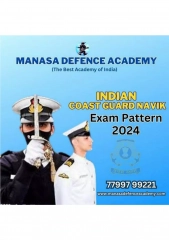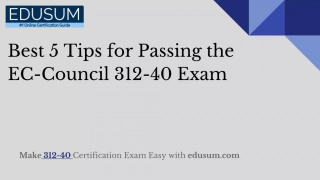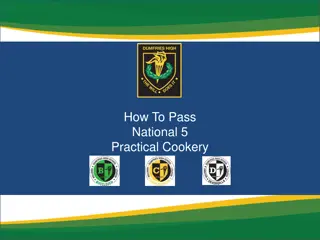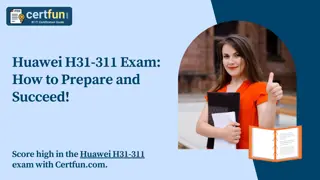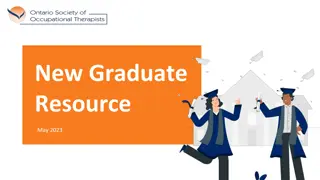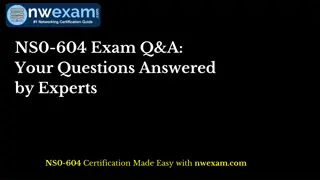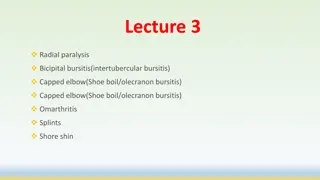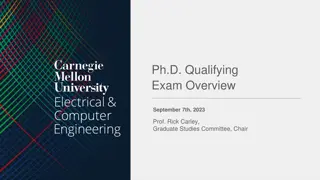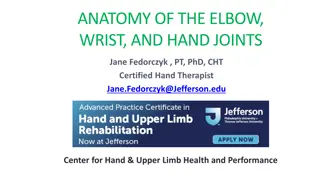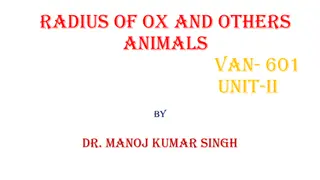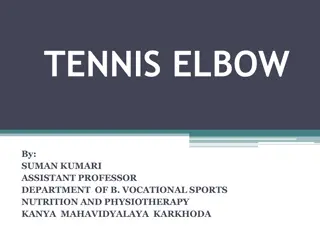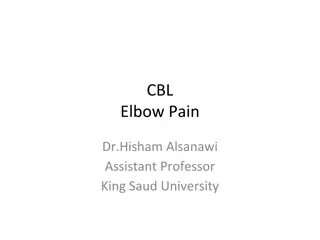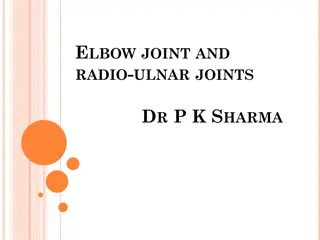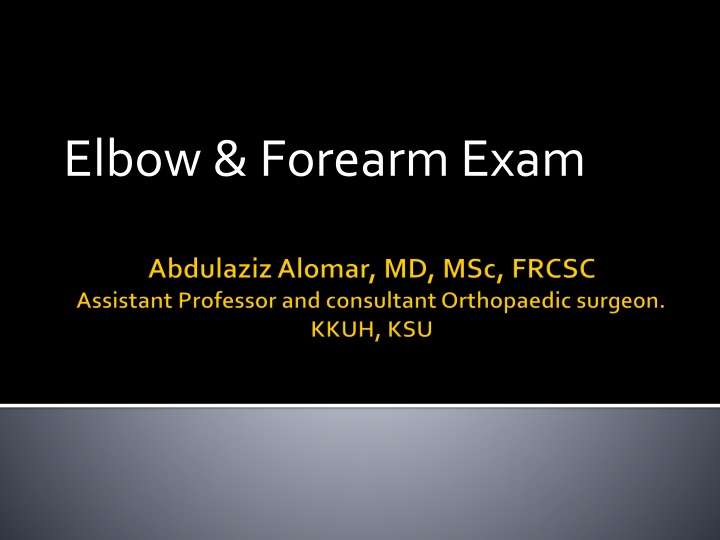
Elbow & Forearm Exam Essentials for Better Function
This comprehensive guide covers crucial aspects of the elbow and forearm examination, including important articulations, stabilizers, ligaments, and anatomical landmarks. Understanding these elements is essential for assessing upper extremity function, performing activities of daily living, and diagnosing common pathologies. Learn about the ulnohumeral joint, radiocapitellar joint, PRUJ, MCL, LCL, carrying angle, ligament stability, and more. Enhance your knowledge and proficiency in evaluating elbow and forearm conditions with this valuable resource.
Download Presentation

Please find below an Image/Link to download the presentation.
The content on the website is provided AS IS for your information and personal use only. It may not be sold, licensed, or shared on other websites without obtaining consent from the author. If you encounter any issues during the download, it is possible that the publisher has removed the file from their server.
You are allowed to download the files provided on this website for personal or commercial use, subject to the condition that they are used lawfully. All files are the property of their respective owners.
The content on the website is provided AS IS for your information and personal use only. It may not be sold, licensed, or shared on other websites without obtaining consent from the author.
E N D
Presentation Transcript
Important for U/E function, ADLs etc 3 articulations Ulnohumeral joint (uniaxial hinge) Radiocapitellar joint (uniaxial hinge) PRUJ (uniaxial pivot joint)
Important stabilizers MCL 3 bands Anterior tight in extension Most important one (mcq) Posterior tight in flexion Transverse ligament Often torn during elbow dislocations
LCL Radial collateral ligament Lateral ulnar collateral ligament (PLRI) Annular ligament Accessory lateral collateral ligament Radiocapitellararticulation Ulnohumeralarticulation
SEADS olecranonbursa Triangular zone Carrying angle Males 5 to 10, females 10 to 15 Cubitus varus Cubitus valgus other
All soft tissue and bony prominences LCL, MCL, LUCL, annulus Medial and lateral condyles Flexor and extensor masses Cubitalfossa Cubitaltunnel Intraosseousmembrane (essexlopresti lesions will be tender)
Normally 0 to 140 Some (women) 10 hyperextension as normal Functional range is 30 to 130 for ADL s, etc Supinationis 90 Pronationis 80 Functional range is 50 for both Active before passive
Ligament stability Unlock ulnohumeralarticulation by flexing the elbow to 20 or 30 degrees LCL complex Pronate the forearm to tighten the extensor mass One hand on the elbow, one on the wrist Some say to IR humerus (Regan & Morrey, et al) Apply a varus load Compare to the opposite side
MCL Same thing, except valgus force ER of humerus recommended by same guys PLRI LUCL tear in elbow injury / dislocation Lateral pivot shift test Patient is supine with arm overhead The elbow is extended fully
You apply an axial load with a valgus force, while bringing the arm into flexion At around 20 to 30 degrees, you will get apprehension = + sign If fully relaxed (sedation), you may get subluxation and a palpable clunk at reduction with further flexion or return to extension
Lateral epicondylitis AKA tennis elbow Patient actively pronates and extends the wrist while you palpate the lateral condyle, positive with recreation of symptoms Passively move into pronation and full flexion, placing stretch on mass, positive is recreation of symptoms Resisted extension of 3rddigit, tests EDC, pain +
Medial epicondylitis Passive supination and wrist extension, stretching the flexor mass, recreation of symptoms is +
Tinelssign Ulnar nerve compression at cubital tunnel Tingling at and distal is positive Wartenburg s sign Hand on table, passively abduct fingers Patient adducts them together and little finger lags behind Positive for ulnar neuropathy
KilohNevinsyndrome AIN motor ok sign unable do to flexor / pinch paralysis C5 is lateral arm, T1 is medial Lateral cutaneousnerve Medial cutaneousnerve ***Nerve Compression Tests***
WartenbergsSign Kiloh-Nevin, ok is not achievable

